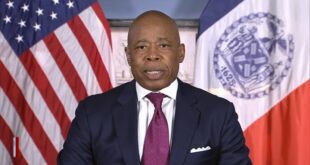Franklin Primary Health Center’s Tamekia Cunningham-Abrhams discusses community health fair
Tamekia Cunningham-Abrhams, the Vice President of Strategy and Business Development at Franklin Primary Health Center, recently discussed the importance of community health fairs in promoting well-being and preventing diseases. She highlighted the Center’s commitment to providing accessible healthcare services to underserved communities.
Improving Community Well-being
Cunningham-Abrhams emphasized that community health fairs play a vital role in improving the overall well-being of individuals by offering free health screenings, educational resources, and access to healthcare professionals. The fairs are designed to empower community members to take charge of their health and make informed decisions.
She explained that through health fairs, individuals can receive screenings for various health conditions such as diabetes, high blood pressure, cholesterol, and cancer. Early detection is essential for effective treatment, and these events provide an opportunity for individuals to identify potential health risks at an early stage.
Targeting Underserved Communities
The Franklin Primary Health Center’s community health fairs specifically focus on reaching underserved communities. Cunningham-Abrhams highlighted that individuals from these communities often face barriers to accessing healthcare due to factors such as financial constraints, lack of transportation, and limited awareness.
By bringing healthcare services directly to these communities, the Center aims to bridge the gap and ensure that everyone has access to essential health screenings and resources. Cunningham-Abrhams emphasized that this approach is crucial in promoting health equity and reducing health disparities.
Collaboration and Partnerships
Cunningham-Abrhams acknowledged that organizing successful community health fairs requires collaboration and partnerships with various organizations and community stakeholders. The Center actively collaborates with local hospitals, healthcare providers, community centers, and non-profit organizations to make these events possible.
She stressed the importance of building strong relationships and leveraging community resources to ensure broader reach and impact. Through these collaborations, the Center can provide comprehensive health services beyond the health fair itself, including referrals to specialty care and ongoing healthcare support.
Empowering Individuals
One of the key goals of community health fairs, according to Cunningham-Abrhams, is to empower individuals to become proactive about their health. By providing accessible healthcare services and education, the Center aims to equip community members with the knowledge and resources they need to make positive changes in their lives.
She emphasized that health fairs not only focus on physical health but also address mental health and social determinants of health. Counseling services, information on healthy lifestyles, and resources for mental well-being are also offered at these events.
Conclusion
Tamekia Cunningham-Abrhams’s discussion highlighted the significance of community health fairs for promoting well-being and addressing health disparities. By targeting underserved communities and providing essential healthcare services, these events empower individuals to take charge of their health and make informed decisions. Collaborations and partnerships with various organizations play a crucial role in organizing successful community health fairs and extending the impact of the services provided.
 Mind Uncharted Explore. Discover. Learn.
Mind Uncharted Explore. Discover. Learn.

